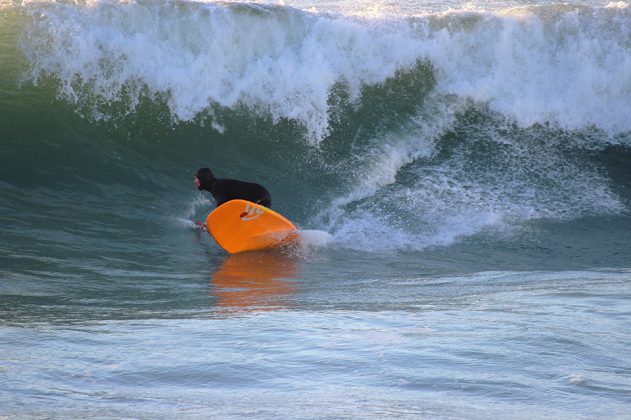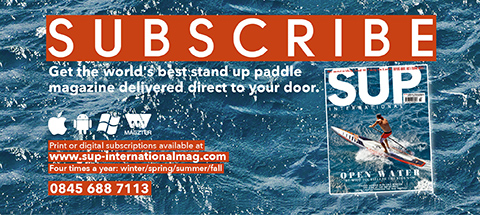BACK TO BASICS –
BEATING BBTS
(Bad Bottom Turn Syndrome)
With – Rob Small
Photo – Kate Starling
Distressingly, Bad Bottom Turn Syndrome, referred to as BBTS, is an endemic condition that severely arrests SUP surfing development.
The bottom turn is by definition a turn performed at the base of the wave, the best ones being executed out on the flats, utilised to generate speed to project you along the wave, up into the lip or any trajectory between. An effective bottom turn will not only give you speed to burn but also provide the best following manoeuvre options on any given wave (that being said on critical waves there may only be one option and a belter of a BT may be the only way to make the wave).
The truth is that the bottom turn is THE MOST IMPORTANT TURN in SUP surfing (any surfing) and a poorly one will always manifest itself in the following ride. Symptomatic of BBTS are: waist hinging, lack of speed, missing the critical part of the wave, bogged cutbacks, over amped top turns, frenetic body movements and the most common of all, straight legs.
For those of us suffering from BBTS, just trying to get through a session can be a painful and embarrassing experience. There is NO MAGIC BULLET. But there are plenty of ways to treat the condition effectively, relatively rapidly and usually with spray throwing, power laden results.
Personally I like to assume an holistic stance when treating BBTS and approach this essential surfing component as the foundation of every well ridden wave. Get it right around the bottom and you’ll find there’s more fun everywhere else. Let’s examine a course of treatment.
“ The truth is that the bottom turn is the most important turn in SUP surfing ”
COMPRESS-LOOK-HOLD-RELEASE
Compression (and the corresponding extension) is vital to vanquishing BBTS as it is in all manoeuvres. Lack of it is the most common symptom but fortunately an easily treated one. Key to getting the most out of BT compression (bending your knees and ankles to get low over the board while staying centred over the middle of it) is to place the BT to allow maximum speed and projection.
Try to head straight down the wave towards the beach, in place of running parallel to the wave face, wait until you’re on the flats and then compress low to the board and engage the rail to turn. At this point you need to be looking at the part of the wave where you want do your next turn, be it up in the top of the wave face, under the breaking lip or even just surfing through a fast section. This is where holding comes in. By sinking the rail you are storing energy and the longer you hold it (maintaining the rail in the water with your weight) determines where you’ll find yourself exiting the BT.
Long holds project you down the line while short holds throw you in a more vertical line. Then we enter the release, or exit phase of the BT. You can describe it as unweighting, allowing your rail to come out of the water as you reduce the pressure on it (here’s the bit where the corresponding extension, a relative straightening of your ankles and knees happens) and letting the board take the desired track. Get it right and the rest of the wave will start to come together more comprehensively.
SUPPLEMENTARY NON-MAGIC BULLET BBTS TREATMENT AIDS
• Don’t BT too parallel to the wave face. Small, flat faced waves tend to encourage running down the line from take off and this approach can limit your possibilities. Try to turn from 90 to 45 degrees from the wave face.
• Don’t look down, look where you’re going, you should be looking at the next turn’s placement whilst executing the current one.
• Use your paddle blade like you would your hand if surfing a regular board, it’s simultaneously a pivot and a brace. Get the bugger in the water.
• Push your weight through your board and commit your rail when bottom turning. Commit goddamnit. Stick your arse out and bend those legs. This is the muscle turn, make it happen. SUP


